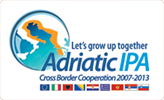Detailed geological investigation of the platy limestone revealed a widespread occurrence in the RoofOfRock project area along the karstified Adriatic coast. At many locations, limestone plates are of good quality and assessed as appropriate for use as building material. Besides, platy limestone was traditionally exploited extensively for local use, and there are many examples of good practice of its usage. Despite the fact that almost all platy limestone types were deposited on the same former (mostly Late Cretaceous and Late Paleogene) shallow-marine carbonate platform, local geological and geomorphological conditions have resulted in some important differences between the various types of platy limestone. Geological units containing platy limestone in the project area are irregularly distributed within the carbonate succession and are of different ages. Most horizons are up to a few tens of meters thick, while in many places their thickness is less than one meter. In addition, the spatial distribution of platy limestone depends significantly on the relation between geological (bedding dip) and morphological (slope dip) features. In the areas where the dip of limestone beds is gentle and the surface is relatively flat, platy limestone can be exposed over wide areas. The most spatially extensive types of platy limestone are known from the central and southwestern parts of the project area in Herzegovina, in the central Dalmatian islands (Šolta, Brač, Hvar and Korčula), the Pelješac peninsula, the Trogir and Benkovac areas as well as in western part of Istria in Croatia and in central part of the Kras area in Slovenia, respectively. Platy limestone outcrops were also evidenced at numerous other locations where it is exposed in thin, dispersed and spatially limited horizons (e.g. the Karst area in Italy). Regarding the platy limestone quality, it should be noted that most of the platy limestone outcrops and even single beds are not lithologically homogenous, as a result of its genesis in the paleo environment. Geomechanical analyses and expert field geological assessment of the limestone quality revealed that the homogenous very fine-grained limestone (micritic lithotypes) and horizontally laminated (microbial) muddy limestone is the best quality. It is worth mentioning that in the southern and central part of the Kras in Slovenia, a special type of limestone plates of relatively good quality was widely used for roofing. It was referred to as fractured limestone as its origin is tectonically related.
The use of platy limestone as a building material has been following the rule of using the closest source possible. Plates used in constructions mostly originate from local sources, situated in the vicinity.
According to all the mentioned spatial and natural characteristics (e.g. occurrence, quality and reserves) and the traditional use of limestone plates, a set of geological recommendations and guidelines is suggested. The project area is vast and geologically, morphologically and climatically diverse so some of the recommendations can’t be applied across the entire project area. Instead, certain recommendations are only applicable within selected regions. The four most prominent geological sets of recommendations for the sustainable exploitation of platy limestone are listed below.












